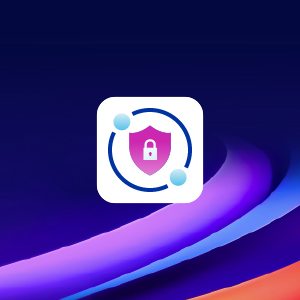I had the opportunity to present to the DoD community at AFCEA TechNet Cyber where where stakes are high and operational tempo is relentless, embedding security into every layer of the digital environment is no longer optional. Identity governance and administration (IGA) has emerged as a cornerstone of cyber resilience, enabling secure modernization, supporting Zero Trust mandates, and accelerating mission impact.
Identity as a Strategic Force Multiplier
Modern warfare and defense readiness extend far beyond kinetic capabilities. Cyber is now a primary domain of operation, and within that domain, identity is the new perimeter. Identity security is not simply about access control; it is about governing who has access to what, when, and under what conditions—across all users, environments, and applications.
A well-implemented IGA program transforms complexity into control. It provides the visibility and automation needed to reduce risk, enforce policy, and enable agility. From onboarding mission partners to ensuring continuous compliance with audit and risk frameworks, identity governance acts as the connective tissue between policy, people, and mission success.
Governance is the Gateway to Zero Trust
The DoD’s Zero Trust Architecture (ZTA) is predicated on one central truth: never trust, always verify. At the core of this paradigm is the concept of least privilege—granting users only the access they need, nothing more.
IGA platforms like SailPoint do more than facilitate access. They enforce policy and establish what access should look like, continuously verifying access needs, and tie the identity to activity. Instead of relying on static credentials or infrequent certifications, identity governance brings continuous verification to life—ensuring users, devices, and applications are validated and flagged in the policy information point before access is granted.
This proactive stance aligns IGA with foundational guidance such as the Risk Management Framework (RMF), and the NIST SP 800-53 controls. Governance is not just a checkbox; it is operational security in action.

FIAR, Compliance, and Continuous Audit Readiness
Passing audits like FIAR (Financial Improvement and Audit Readiness) is more than a bureaucratic exercise. It’s a demonstration of operational integrity and mission readiness. Identity governance simplifies this process by embedding compliance into everyday operations.
IGA platforms automate access certifications, enforce separation of duties (SoD), and maintain immutable audit trails. Instead of scrambling for documentation during audit season, organizations can prove—at any time—that they were always in compliance. This shift from reactive to continuous audit readiness is a game-changer for large DoD organizations.
Mission Agility Through Automation
In the DoD, time is not a luxury. Missions shift quickly, mission partners rotate often, and new technologies are deployed at speed. Manual processes simply cannot keep up.
IGA enables automation across the entire identity lifecycle. From onboarding new coalition partners to deprovisioning departing contractors, governance tools streamline access requests, approvals, and revocations. This not only enhances security but also reduces administrative overhead, freeing resources for mission-critical tasks.
Moreover, by integrating with technologies like the DoD Federation Hub, identity governance extends its reach to federated and cross-domain environments—supporting secure joint and coalition operations at scale.
Real ROI: Security that Pays for Itself
The value of IGA goes beyond risk mitigation. It delivers measurable return on investment (ROI) through operational and financial gains. These include:
- Audit cost reductions through automated evidence collection and fewer control failures
- License savings by rationalizing unused or redundant entitlements
- Operational efficiency through faster onboarding/offboarding and reduced manual workloads
- Risk reduction by limiting the window of exposure for insider threats or privilege misuse
This is ROI by design—security investments that drive cost savings while advancing strategic goals.
A Maturity Model for Sustainable Progress
Identity governance is not a one-time deployment—it’s a journey. I have created a maturity model for the DoD that provides a structured path from basic CAC availability to advanced, AI-driven, risk-adaptive governance. Each step builds capabilities that align with Zero Trust pillars, from policy enforcement to real-time threat response.
As organizations mature, they can integrate IGA with other strategic technologies such as Comply-to-Connect, SASE, and XDR, multiplying both security effectiveness and mission agility.
Conclusion: Govern Everyone, Prove Every Access
To secure the mission, you must govern identity with the same rigor used to defend the network. Identity security is no longer a backend control; it is the control plane for modern defense operations.
Govern everyone. Prove every access. This is the blueprint for a Zero Trust future—one where audit readiness is continuous, access is justified, and the mission moves at the speed of trust.
Learn more about how ICAM solutions empower agencies to manage digital identities with precision.



